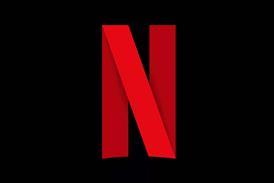Attempts to censor or ban Srdjan Spasovjevic’s shocking horror film miss the point of the director’s intentions and his considerable skills.
I’ve seen A Serbian Film. The shocking horror movie has been stoking up controversy for months now and was recently behind a complaint filed by Barcelona public prosecutors against the Sitges Film Festival director Angel Sala accusing him of screening child pornography. Last year the British Board Of Film Classification demanded some 50 cuts before it could be released on DVD in the UK and it was pulled from the Frightfest lineup in London in August.
But Srdjan Spasovjevic’s film is far more well-made and intelligent than it is being given credit for. The story of an aging porn star given the chance to make one last lucrative movie by a mysterious millionaire, the film becomes a descent into hell as his benefactor is actually a depraved puppetmaster, turning the man into a killer and violator of all he holds dear.
It’s a genre film but it’s clearly a metaphor for the carnage that took place in the Yugoslav wars as men, women and children were massacred; everyday people became murderers desentitised to violence and killing, rape became a widespread form of political control and the Milosevic government led the population on in a wave of nationalistic fervour and media control.
The actions portrayed in A Serbian Film are indeed grotesque and of course it’s not for the faint of heart. But it’s meant to shock and illustrate the horrors of violence and sexual violence, even if towards the end, the images are so extreme that they shouldn’t be taken too seriously. The film possesses a genuine sense of dread and the characters who survive literally cannot live with the knowledge of what they have gone through. As in the 1990s in Serbia, it is filled with monstrous happenings. It is indeed A Serbian Film.
The response to the film in Sitges, London and other places – the lab in Germany burned the print of the film they had made when they saw it – has been irritatingly prudish and misses the point. But then other daring films have recently met with a similarly outraged response, namely Brillante Mendoza’s brilliant and disturbing Kinatay and Michael Winterbottom’s haunting psychological thriller The Killer Inside Me.
Kinatay was so roundly dismissed by critics in Cannes 2009 that its subsequent win of the best director prize – jury chairman Isabelle Huppert was an avowed fan – came as a surprise to most. Likewise The Killer Inside Me, whose ugly scenes of violence against women are essential illustrations of the lead character’s personality, was booed by some critics at its Berlin competition screening. It’s as if cinema weren’t intended to reflect reality or depict the violence that happens every day in every country in the world. That’s exactly what cinema should do. I certainly don’t relish watching scenes of extreme violence on screen, but I do appreciate unsettling films which pushes audiences into their discomfort zone and exposes them to the darker side of life and human nature.
Several people I know have avoided watching A Serbian Film because they know that they will find it unsettling and unpleasant. I’m not even sure I am glad I saw it myself: it definitely got under my skin. But I admire its ambition to expand the horror genre and oppose any attempts to prevent its exhibition.






















2 Readers' comments